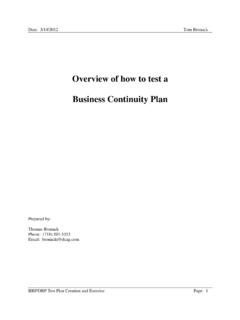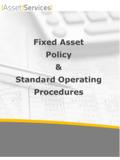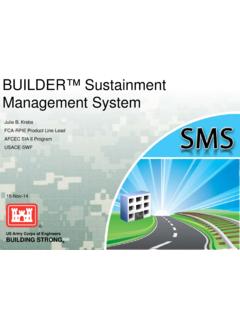Transcription of Inventory Management System - DCAG
1 Inventory Management System Release Date: March 18, 2012 Prepared by: Thomas Bronack Standards and Procedures Manual Inventory Management Page: Section Table of Contents 1. Inventory Management .. 4 INTRODUCTION TO Inventory Management .. 4 DEFINITION .. 4 SCOPE .. 6 MISSION .. 7 OBJECTIVES .. 8 FUNCTIONAL AREAS.. 9 INTEGRATED Inventory Management System .. 10 SMC DISCIPLINE INTERFACES .. 11 Inventory Management DISCIPLINES AND INTERFACES .. 13 PROCESS DESCRIPTION .. 14 NETWORK .. 14 System .. 14 Inventory Management PROCESS .. 15 Inventory Management FLOW .. 16 PROCESS FLOW.. 17 1. NON-CONTROLLED ACR ENTRY: .. 17 2. CONTROLLED ACR ENTRY: .. 17 IMPLEMENTATION OF Inventory Management .. 18 System ENVIRONMENT .. 18 NETWORK ENVIRONMENT .. 19 DATA REQUIREMENTS FOR Inventory Management .. 20 Inventory Management DATA MODEL.
2 21 COLLECTING, MONITORING AND REPORTING 25 Inventory Management RECORD HIERARCHY .. 26 DISCIPLINE RELATIONSHIPS .. 27 BUSINESS FUNCTION INTERFACES .. 27 System Management INTERFACES .. 29 Inventory Management TOOLS .. 30 ASSET Management AT THE System TO SERVER LEVEL .. 30 INDUSTRY STANDARDS .. 32 DOWNSTREAM NETWORK SERVER CONFIGURATION AND Inventory Management .. 34 ROLES AND RESPONSIBILITIES .. 36 Inventory MANAGER .. 36 Inventory CLERKS .. 36 PROCESS EVALUATION .. 37 PRESENT System WEAKNESSES .. 37 RECOMMENDATIONS FOR IMPROVEMENT .. 37 Standards and Procedures Manual Inventory Management Page: Section List of Figures FIGURE 1: OVERVIEW OF Inventory Management FUNCTIONAL AREAS.. 9 FIGURE 2: OVERVIEW OF AN INTEGRATED Inventory Management System .. 10 FIGURE 3: SMC DISCIPLINE INTERFACES .. 11 FIGURE 4: Inventory Management System - OVERVIEW OF PROCESS.
3 15 FIGURE 5: Inventory System FLOW DIAGRAM .. 16 FIGURE 6: Inventory Management DATA MODEL .. 21 FIGURE 7: Inventory Management RECORD HIERARCHY .. 26 FIGURE 8: ASSET Management AT THE System TO SERVER LEVEL .. 31 FIGURE 9: DOWNSTREAM NETWORK SERVER AND Inventory Management .. 34 Standards and Procedures Manual Inventory Management Page: 1. Inventory Management Introduction to Inventory Management Definition Inventory Management is an enterprise-wide discipline concerned with the identification and tracking of Information Services (IS) hardware and software assets. Its three main areas of concern are: Acquisition. Redeployment. Termination. Acquisition procedures are established to assist personnel in procurement of software and hardware products. Its main purpose is to ensure that proper justifications are performed and that financial guidelines are followed.
4 Redeployment procedures are responsible for ensuring that assets are tracked when moved from one location to another and that budgetary considerations are adjusted as needed. Should a product be moved in conjunction with its original owner then the Inventory System is updated to reflect the new location. Should a product location and owner change, then the Inventory System must be updated to reflect the new owner and their location. In this case, the old product is deleted from the original owner's budget and added to the new owner's budget. Termination is responsible for deleting the asset from the Inventory when it is discontinued, or replaced. The owner's budget will be updated to reflect the asset termination and the asset will no longer be listed when location reports are generated. The Inventory System is maintained within a database that ties an asset to its owner and defines the location where the asset resides.
5 The relative importance of the asset is added to the Inventory record ( , Criticality = 1-5, where 1 is "Most Critical"). Based on this information the contingency planning specialist can plan asset recoveries needed to support critical business operations. Standards and Procedures Manual Inventory Management Page: Like all databases, the Inventory System will only be effective if its information is kept current. To ensure the accuracy of the Inventory System , while not adding too great a burden to company personnel, every effort must be taken to implement processes that maintain Inventory data with a minimum work effort from personnel Inventory Management provides: Up-to-date information about data processing resources through the creation and archiving of records in a centralized repository. Financial records specific to a single component, or groups of components. Service records for all components in the Inventory .
6 Data used to support configuration diagrams of the hardware and software components contained within specific locations, or the entire data processing environment. Standards and Procedures Manual Inventory Management Page: Scope The Inventory Management discipline encompasses all System and data network elements from the mainframe through the server level to the PC or end component throughout the enterprise. All mainframe and data network based hardware and software assets must be identified and entered into the Inventory System . Any changes to these environments must be reflected in the Inventory System . Financial and technical product information must be available through the Inventory System , as needed to support the functional responsibilities of personnel within the finance and contracts Management departments. Asset criticality must be included with asset descriptive and financial information, so that the Recovery Management department is supplied with the information it requires.
7 Recovery actions must be implemented to safeguard critical assets. The Standards and Procedures Manual section relating to Inventory Management must be created and published. This section must describe the process by which assets are identified, entered into the Inventory Management System , tracked, and finally deleted. All information needed by personnel to perform Inventory Management functions must be clearly described within this S&P Manual section. Finally, personnel responsible for implementing, supporting, and maintaining assets must have access to the Inventory Management System to identify asset information needed by them to perform their functional responsibilities. This process includes logging the availability or assets, their support history, and any maintenance activity performed on the asset. Standards and Procedures Manual Inventory Management Page: Mission The mission of an Inventory System is to provide a Central Asset Repository of information used to define assets and relate the asset to its owner, location, and relative importance.
8 This information will provide personnel with data needed to support their job functions, for example: Facilities Management will be able to plan Heating, Ventilation and Air Conditioning (HVAC) requirements, as well as power and floor space needed to support equipment listed in the Asset Repository for a specific location. Financial Services will be able to budget for asset procurement, depreciate assets over time, and prepare complete tax documents. Contracts Management will be able to negotiate vendor discounts and enterprise agreements. Contingency Planning personnel will be able to develop recovery plans for mainframe and office assets contained within the Inventory System based on the assets relative importance (as stated within the Criticality field). Technical personnel will be able to resolve problems more quickly with the information contained within the Inventory System , because they will have a listing of the assets contained within a location and any support or maintenance activities associated on the asset.
9 The Inventory System should be integrated within the everyday functions performed by personnel associated with entering and maintaining asset information. The System will reduce the effort devoted to asset Management , while supplying many personnel with the information they need to perform their functional responsibilities. Every effort should be made to develop a central Asset Repository that covers the entire enterprise, rather than having separate Asset Repositories for mainframe, network, and distributed environments. Having a single repository will simplify accounting and asset Management , while allowing for the implementation of enterprise-wide asset Management standards and procedures. Standards and Procedures Manual Inventory Management Page: Objectives The objective of Inventory Management is to manage the physical and logical properties of I/S resources and their relationship, while ensuring that service level commitments are achieved.
10 This process will: Ensure efficient and timely identification of vital corporate assets. Assist in managing the enterprise-wide Inventory . Provide a common repository for asset protection. Plan and control the proliferation of assets across the enterprise. The objectives of Inventory Management are: To identify and track all data processing assets in an Inventory System Repository. To define the process by which assets are identified and maintained in the Inventory System . To provide Inventory System access to all necessary personnel (data entry, view, update and deletion). To provide a full range of reports that will satisfy informational requirements. To document the Inventory Management System within the Standards and Procedures Manual. To provide training to personnel responsible for supporting the Inventory Management System . Standards and Procedures Manual Inventory Management Page: Functional Areas.







